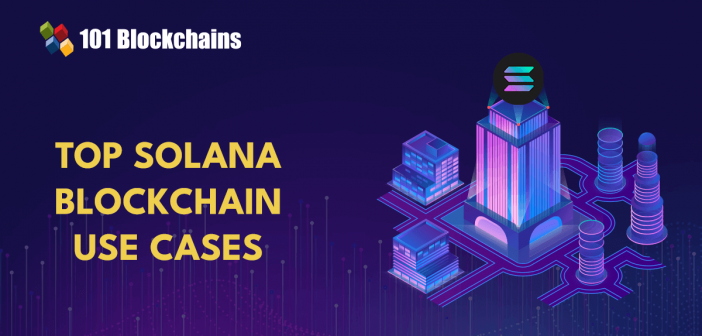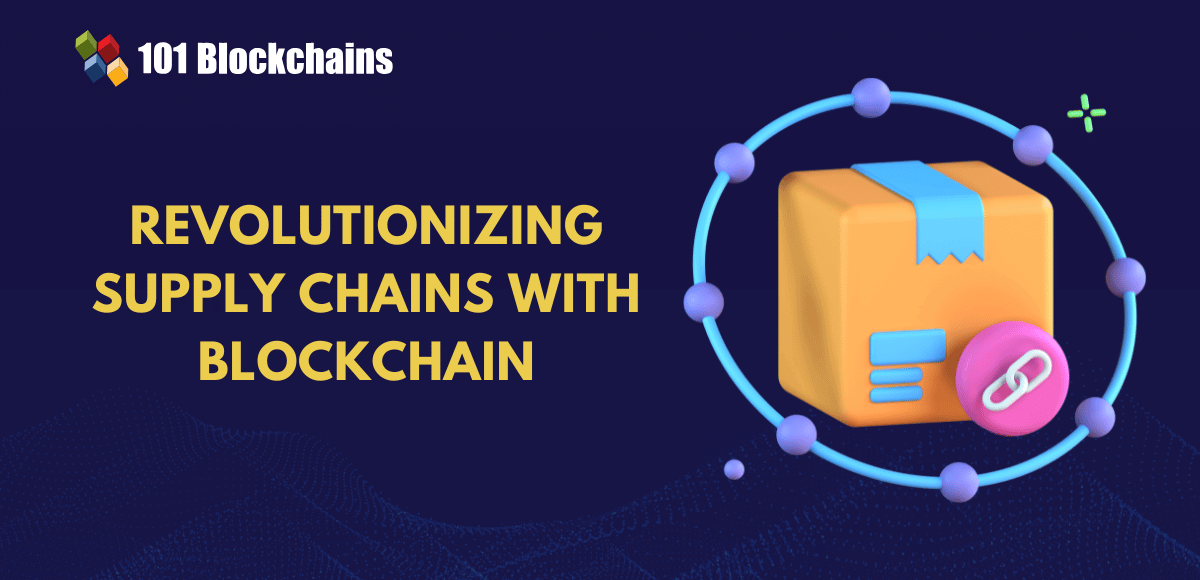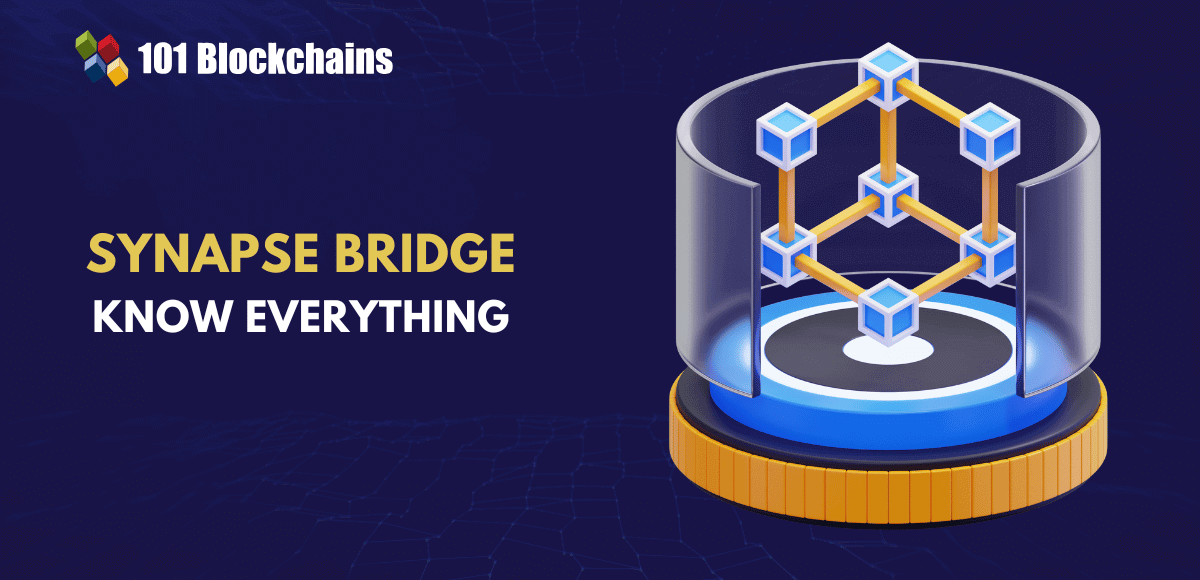Learn how blockchain truly works, master key definitions, and uncover what makes smart contracts so "smart." Dive into the fundamentals, gain valuable insights, and start your blockchain journey today!

- Blockchain
James Howell
- on November 22, 2023
Top 5 Solana Blockchain Use Cases
The continuous growth of blockchain technology presents favorable prospects for multiple industries. One of the most promising candidates for blockchain transformation is the financial services sector. Disruptive technology helps in building solutions in public and ensures that transactions are secure and trustless. Solana has emerged as one of the prominent entries among new blockchain networks with innovative features and functionalities. The top Solana blockchain use cases showcase the benefits of speed and scalability. Solana serves as an ideal platform for developing cryptocurrencies, blockchain infrastructure, and dApps. It was launched to the public in 2020 and has gained more than 11.5 million active users. Solana Blockchain has the vision for ensuring the mainstream availability of blockchain technology.
Solana has been created to empower every individual with financial freedom, opportunities, and security. As a matter of fact, the Solana ecosystem is a perfect embodiment of decentralization. Let us unravel the secrets behind the design of Solana and learn how its use cases could offer value to users.
Build your identity as a certified blockchain expert with 101 Blockchains’ Blockchain Certifications designed to provide enhanced career prospects.
What is Solana?
The first thing you need to learn before diving into the use case of Solana blockchain is the design of Solana. You can find answers to “What is Solana blockchain used for?” by identifying how Solana works. The founders of Solana created the blockchain platform for addressing issues with efficiency and scalability. As an open-source platform, Solana opens multiple opportunities for developing high-performance smart contracts. The Solana ecosystem also features a native token, SOL, which you can use for paying transaction fees and staking.
You might wonder about the specialty of Solana blockchain. Does Solana change the use of blockchain to introduce positive change? Yes, the layer 1 blockchain network could address the scalability issues in blockchain industry. Interestingly, it also resolves the blockchain trilemma by avoiding any compromises on other important traits of blockchain, decentralization, and security.
Excited to learn about the fundamentals of Solana and Solana smart contracts development, Enroll now in the Solana Development Course.
How Does Solana Solve the Blockchain Trilemma?
The ability of Solana to solve the blockchain trilemma emerges from the transformation of the consensus mechanism. Ethereum provided opportunities for expanding blockchain use cases beyond the domain of cryptocurrency development. It helped in resolving the shortcomings associated with Bitcoin blockchain with smart contract functionalities. Ethereum provided an exceptional transaction speed of 15 transactions per second.
However, Ethereum had to experience its share of criticism for using the Proof of Work consensus mechanism. It was expensive and energy-intensive, alongside presenting the problem of scalability due to slow throughput. Subsequently, Ethereum switched to the Proof of Stake consensus algorithm to overcome the challenges. The founders of Solana noticed that even the Proof of Stake consensus algorithm could have some setbacks.
Proof of History Consensus
Solana could achieve faster transaction speed by utilizing the hybrid consensus protocol with the best Proof of Stake and Proof of History. The Proof of History consensus mechanism is an important highlight for the best Solana blockchain use cases as it offers better throughput and transaction speed.
The Proof of Stake consensus mechanism has been known for better energy efficiency and is an effective alternative to the Proof of Work model. On the other hand, Proof of History involves the use of a decentralized clock that helps in timestamping for every event on the network. The nodes could develop a chronological record that showcases the trail of every event and when it happened.
The timestamping ensures that Solana does not rely on node synchronization. It is a primary factor affecting the throughput of decentralized blockchain networks. If the nodes could reach a consensus faster, the network could process more transactions. Without the need for node synchronization in the use of blockchain, validators could create a record of the blockchain in the right order. Solana also utilizes parallelization technology, which ensures parallel smart contract execution. Therefore, it can also ensure scalability for the entire network with faster and better hardware resources.
The power of Proof of History and parallelization technology complements the top Solana blockchain use cases with promising advantages. For example, Solana registers exceptionally higher performance in speed and scalability as compared to other smart contract-enabled blockchain networks.
Solana blockchain claims that it can process more than 50,000 transactions per second. Most important of all, it claims a block confirmation time of 400 milliseconds and transaction fees amounting to less than a cent. The performance figures of Solana help it outperform its biggest competitors and serve as an ideal alternative for blockchain developers and users.
Want to understand key elements of blockchain technology? Check out Blockchain Fundamentals Presentation
What Are The Other Notable Features in Solana Blockchain?
The Proof of History mechanism is the answer of Solana to the limitations with Proof of Stake. However, that does not provide a complete explanation for the reasons to learn about use cases of Solana blockchain. If you want to find the answers to “What is Solana blockchain used for?” then you must understand the different features in the architecture of Solana.
The Proof of History consensus mechanisms refine the concept of decentralization. How? Proof of Work and Proof of Stake consensus mechanisms enable miners and validators to access transaction information in advance. As a result, miners and validators could control the user information in transactions.
Proof of History offers a cryptographic clock that helps in maintaining track of transactions, which would relieve nodes from the burden of transaction verification and validation. Interestingly, the best Solana blockchain use cases showcase the perfect example of advantages of Proof of History. At the same time, you must also learn about the following elements which empower the functionalities of Solana blockchain.
-
Solana Cluster
The clusters could maintain the integrity of the network through the maintenance of transactions on the Solana blockchain. Clusters are a collection of validators, and you could find two different types of clusters in the use of blockchain with Solana use cases.
The two types of clusters include independently owned clusters and co-existing clusters, which share one genesis block. Clusters could also track the real-world assets on Solana blockchain. They also know about the validator which maintains the cluster. Solana blockchain could help in verifying the results of programs submitted by users.
-
Turbine
The Turbine is another crucial element in the Solana blockchain architecture. It is a multi-layer block propagation protocol, which helps in broadcasting transaction shreds across the network. Turbine utilizes User Datagram Protocol, which can facilitate low latency and low-tolerance connections between apps. The mechanism ensures that communication between nodes is easier.
Enroll in the Blockchain Fundamentals Free Course to understand the different verticals of blockchain transformation alongside leading sectors in blockchain adoption.
-
Gulf Stream
Mempools are the crypto node mechanisms that help in saving data with unconfirmed transactions. Gulf Stream is a mempool-less forwarding protocol, which ensures that blockchain use cases on Solana don’t have any pending transactions. It not only helps in ensuring faster transactions but also ensures effective usage of resources.
-
Tower Byzantine Fault Tolerance (BFT)
The Tower Byzantine Fault Tolerance (BFT) consensus mechanism is an important complement to the Proof of History decentralized clock. Tower BFT ensures safeguards against time delay, thereby helping networks reach agreements faster.
-
Ledger Replicators
Replicators or Archivers are also an important addition to the components of Solana blockchain architecture. The replicators power the top Solana blockchain use cases by storing massive volumes of network data. It also utilizes a public symmetric key for data encryption. Solana also improves security by ensuring random encryption of data and recording the hash. Therefore, the information about transactions stays in the correct sequence for each proof of replication and ensures verification of all proofs in a single batch.
-
Pipelining
Another noticeable aspect you might come across in Solana blockchain architecture is pipelining. It is a rendering technique applicable to CPU design. However, the best Solana blockchain use cases leverage pipelining in DeFi projects. Pipelining serves as an effective choice for maintaining efficiency of the transaction process through management of the transaction lifecycle.
Curious to learn about blockchain implementation and strategy for managing your blockchain projects? Enroll Now in Blockchain Technology – Implementation And Strategy Course!
What Are the Top Use Cases of Solana Blockchain?
The different components in Solana blockchain architecture reveal the potential of Solana for empowering the next stages in the blockchain revolution. You can seek answers for “What is Solana blockchain used for?” in the same use cases of blockchain. However, Solana offers a clearly noticeable advantage over other blockchain networks in different use cases. Here are the top five use cases of Solana blockchain.
-
Decentralized Application Development
The most obvious use case of Solana blockchain is a decentralized application or dApp development. Decentralized applications gained momentum with the arrival of smart contract programmability on Ethereum. Solana also supports the development of smart contracts, which makes it a suitable candidate for dApp development.
Why would people avoid the use of blockchain like Ethereum for Solana? The transaction speed is one of the foremost answers to such questions. Interestingly, developers could create any type of application on smart contract-enabled blockchains, including simple web apps and complex DeFi apps.
Developers need scalable and cheaper platforms for getting their dApps out in the market. Interestingly, the Solana blockchain use cases in dApp development have shown some promising results. The Solana blockchain has an ecosystem of dApps, which continues to grow, primarily in the field of DeFi. Developers want to come up with innovative DeFi applications that could resemble traditional finance solutions in a decentralized manner. As a result, developers could avoid the necessity of centralized intermediaries like banks.
Start learning Blockchain with World’s first Blockchain Skill Paths with quality resources tailored by industry experts Now!
-
Non-Fungible Token Development
Solana has emerged as a top favorite for NFT creators. The popularity of top Solana blockchain use cases in NFTs is evident in the fact that the platform has helped mint over 21 million NFTs. As of now, Solana plans on introducing executable NFTs. Users can access the executable NFTs in the open beta version of the new source wallet. However, Solana NFTs have a unique highlight as they are programmed using Rust and do not have EVM compatibility.
Solana blockchain could also support the development of NFT marketplaces, which allow creators to list their NFTs for sale. Interestingly, you could not find many NFT marketplaces based on Solana blockchain. On the other hand, it would emerge as a top favorite for developing NFT marketplaces due to the benefits of significantly minimal network congestion.
-
Play-to-Earn Games Development
Solana Blockchain believes that the future of gaming will be all about play-and-own games. The evolution of play-to-earn games could find the right track on Solana blockchain with the concept of play-and-own. Solana could help in developing Web3 games that allow players to control ownership of their data.
The network features the advantage of horizontal scalability alongside maintaining a shared state. Some of the best Solana blockchain use cases in gaming include Mini Royale, Panzerdogs, and Aurory. On top of it, some of the Solana-based games also feature NFT marketplaces, which open new avenues in gaming.
-
Decentralized Finance
Another prominent addition among the responses to “What is Solana blockchain used for?” would point to the development of DeFi applications. DeFi offers an open and accessible financial system that utilizes blockchain technology. Solana has become an integral part of the DeFi landscape, with different types of DeFi apps in its ecosystem. You can find decentralized exchanges, digital wallets, and automated contract systems in the Solana ecosystem. Solana could also provide the flexibility for developing asset management software and open-order book exchanges.
Want to learn and understand the scope and purpose of DeFi? Enroll now in the DeFi Introduction Course
-
Decentralized Autonomous Organizations
The advantages of Solana could also support the use of blockchain for creating Decentralized Autonomous Organizations or DAOs. Solana offers high transaction throughput and minimal transaction fees, which are ideal requirements for DAOs. As of now, the Solana ecosystem has 140 DAOs, which entrust every member with an active role. One of the examples of DAOs in the Solana ecosystem is MonkeDAO, which works in collaboration with Solana Monkey Business. The DAO project aims at providing value to community members through community-powered projects.
Start learning Blockchain with World’s first Blockchain Career Paths with quality resources tailored by industry experts Now!
Final Words
The outline of the best Solana blockchain use cases showcases its potential for revolutionizing the future of digital transformation. Solana outshines some of the top competitors with a unique consensus mechanism, i.e., Proof of History. It offers the advantages of faster transaction confirmation, better security, and low transaction fees.
Therefore, Solana blockchain is one of the ideal candidates for empowering the web3 revolution. As a matter of fact, you can notice how the Solana ecosystem supports development of web3 apps, such as dApps, NFTs, DeFi apps, and DAOs. Learn more about the fundamentals of Solana blockchain and how you can use it for Web3 development.
*Disclaimer: The article should not be taken as, and is not intended to provide any investment advice. Claims made in this article do not constitute investment advice and should not be taken as such. 101 Blockchains shall not be responsible for any loss sustained by any person who relies on this article. Do your own research!







